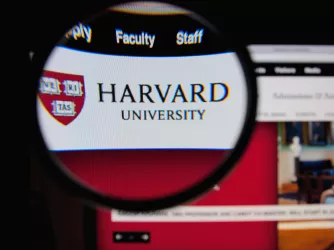Table of Contents
Emmett Hogan on 2006: The More Things Change...?
Emmett Hogan is a student at University of Michigan Law School and a luminary early FIRE employee. As we looked back on 2006 in campus rights and abuses I wanted to check in with him for his thoughts on the past year in FIRE history. This was his thoughtful response:
One of FIRE’s most gripping cases from 2006 involved a breathtaking exercise in thought reform by Michigan State University. FIRE publicly challenged what MSU calls a “Student Accountability in Community Seminar” (SAC) which is intended to address student behavior that administrators consider unacceptable; the seminar is successful only when it forces students to accept responsibility under an ideologically charged notion of right and wrong conduct. The only way to finish the seminar is by filling out a series of questionnaires describing how the student is accepting “full responsibility” for his supposedly offensive behavior. The program is so offensive to free minds that FIRE President Greg Lukianoff has described it as “simply one of the most invasive attempts at reeducation that FIRE has ever seen.”
Yet what is truly noteworthy about such instances of thought reform—or speech codes, or religious intolerance, or indeed any of the many ways in which administrators can and do restrict the civil liberties of their students—is how alike their goals often are. Indeed, university administrators often display a remarkable lack of originality when they move to censor their students’ minds.
For instance, in 2000, FIRE’s co-founder Alan Charles Kors wrote an article for Reason magazine entitled “Thought Reform 101: The Orwellian Implications of Today’s College Orientation.” The piece was a damning indictment of student orientation practices at universities across the country. Programs at institutions such as Swarthmore College, the University of Nebraska, Syracuse University, Dartmouth College, and the University of California at Berkeley—to name just a few—all featured remarkably partisan interpretations of such matters as gender, race, sex, and class. Mere instruction on registration, housing, and drinking policies were apparently not enough. As at Michigan State, administrators at these institutions had decided that it was their task to indoctrinate their students with an ideologically proper worldview.
Recurring approaches to censorship can also be seen in contexts outside of thought reform. For example, a major FIRE story from 2002 involved the “free speech zones” that restricted free expression at West Virginia University to a mere 2% of the campus. FIRE’s media campaign, coupled with creative campaigning by WVU students, and the threat of a lawsuit, led to a total capitulation by the WVU administration. One would have thought that other schools would learn the lesson of this cautionary tale: “free speech zones” at public universities are unconstitutional constraints on liberty that cannot withstand the glare of media attention, to say nothing of legal challenge.
And yet, in 2003, students at Texas Tech University challenged a “free speech zone” that restricted free speech to one 20-foot-wide gazebo. In late 2005, students at the University of North Carolina–Greensboro drew attention to that university’s “free speech zones,” along with other policies that hampered the exercise of free speech rights. And, as of this writing, students at the University of Central Florida continue to challenge their schools restrictive speech zone policy. FIRE was publicly involved in challenging each of these restrictive policies.
In the face of this, it might be tempting to throw one’s arms up in despair and observe glumly, “the more things change, the more they stay the same.” What hope can there be, when administrators stubbornly insist on gagging their students in the same tired ways? And yet, things have certainly changed for students at West Virginia University, whose constitutional rights are now being honored. The same is true at many of the other universities that had “free speech zones.” Many of the colleges and universities indicted in “Thought Reform 101” have since changed their policies. And, hopefully, 2007 will see the end of MSU’s reeducation program as well.
The urge to censor is rooted in human nature, even in highly developed societies like our own. This accounts for the constant recurrence of censorship. And yet, while this urge does not go away of its own accord, it can be countered, primarily through publicity and public education in the values of a free civil society. Censorship will never disappear for good, but as long as FIRE is one the scene, it can be countered—and it can be defeated—when it does arise.
- Freedom of Conscience
- Free Speech
- Litigation
- Dartmouth College
- Syracuse University
- University of California, Berkeley
- University of Nebraska - Lincoln
- Swarthmore College
- University of North Carolina - Greensboro
- University of Central Florida
- West Virginia University
- Texas Tech University
- Michigan State University
Recent Articles
FIRE’s award-winning Newsdesk covers the free speech news you need to stay informed.

Revoking Harvard’s tax-exempt status will threaten all nonprofits

Grandpa’s advice for the new wave of American censors

FIRE POLL: Only 1/4 of Americans support deporting foreigners for pro-Palestinian views
